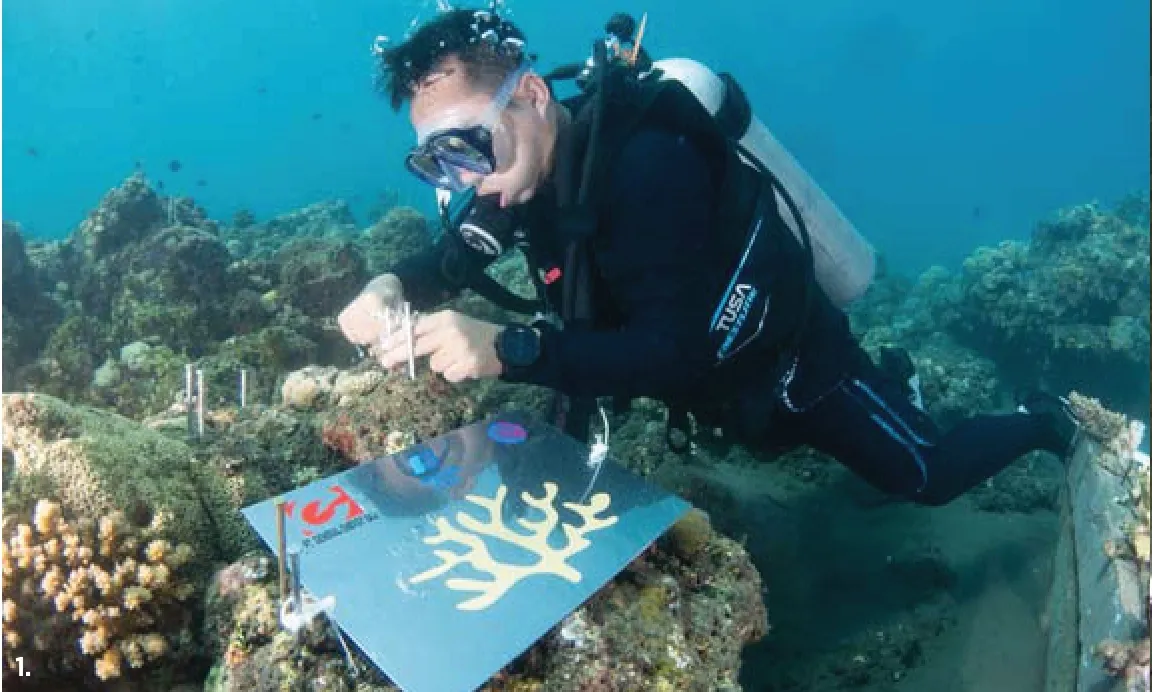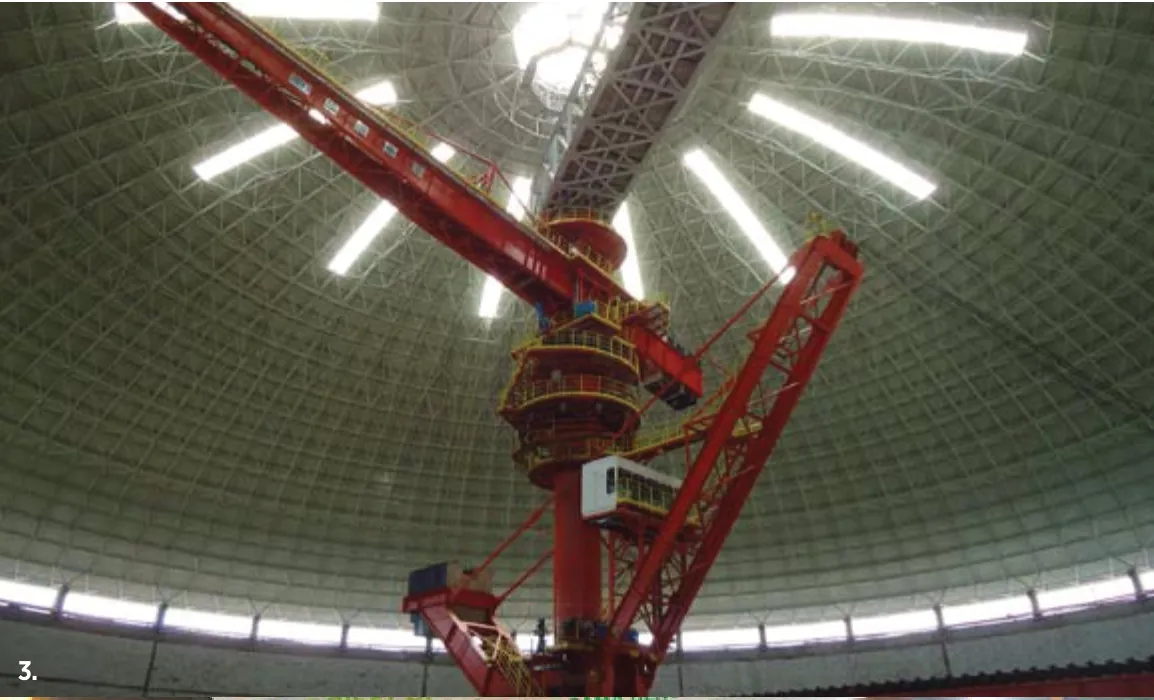China Huadian:Lighting Up Beautiful Bali with Electricity
The 17th Group of 20(G20) Summit will be held in Bali,Indonesia,from November 15 to 16.Human society is facing unprecedented challenges,and the world has again been forced to fight crises at a historic moment.As an international economic forum participated by the world’s largest and fastest growing economies,the 20 member countries of the G20 account for 85 percent of the world’s GDP and two-thirds of the world’s population,making it a vital platform to respond and cooperate.This year’s G20 Summit is more critical than ever.
China and Indonesia are both large developing countries and representatives of emerging economies with many common interests and great potential to cooperate.Indonesia and Kazakhstan were the first two countries to respond to the Belt and Road Initiative (BRI) when Chinese President Xi Jinping first proposed it.Under the BRI framework,China and Indonesia have jointly constructed many projects including the Jakarta-Bandung High-Speed Railway,the “Regional Comprehensive Economic Corridor,” and the“Two Countries,Twin Parks.”
Bali,the host site of the Summit,is the most famous among more than 17,000 islands in Indonesia,with an area of 5,620 square kilometers and a population of 3.15 million.It boasts breathtaking beaches and fresh air and is a top global destination for travelers.In mutually connected world development,the Celukan Bawang Power Plant,funded and built by China Huadian Corporation (“CHD”hereafter),vividly embodies the BRI concept for peaceful development and win-win cooperation.
Bali has suffered power shortages over the past few decades.Even the five-star hotels,which receive countless tourists daily,had to be equipped with diesel generators all year round.Tourism development in Bali was restricted,and the locals often lived in darkness.After the 2015 completion and commissioning of the power plant on Bali’s northern coast,power shortages have become history.
Win-win Cooperation and Shared Development
In Bali,an internationally renowned tourist destination,power shortages have always been a pain for residents and the tourism industry.Years ago,Fuji,a student in a village named Celukan Bawang on the northern coast,would light candles for evening study at school.“There was a rice cooker at home,but we had to save firewood because there were frequent power outages.Sometimes,it could stay dark for as long as one week in a month...,” recalls Fuji.“No electricity,no tap water either.It was hard even to take a shower.We had to fetch water from the well and heat water with firewood.”
According to Li Qun,chief engineer of the Celukan Bawang Power Plant,for a long time,Bali Island relied only on the fuel oil (gas) power plant and two submarine cables from Java Island for electricity;the island’s power demand could not be met.New applications to use electricity were often rejected or restricted,and actual power use was strictly controlled.At the same time,due to high power generation costs and low power sale prices,the government had to compensate Perusahaan Listrik Negara (PLN) for the losses.The government was under tremendous pressure with these financial subsidies.Bali urgently needed a power plant.
From June to August 2015,three 142MW units were put into operation in the north,about 150 kilometers from Kota Denpasar,the capital city of Bali,transmitting electricity to every corner of this beautiful island.At present,the power plant,with an average annual power generation capacity of over 2.8 billion kWh,meets about 40 percent of Bali’s demand for electricity and saves the local government over US$100 million a year.The CHD Celukan Bawang Power Plant has become a stable,reliable and centralized energy solution to the urgent needs of the island.
Welcoming more than 10 million domestic and foreign tourists every year,Bali’s power demands remain high.The then assistant governor of Bali,I Ketut Wija,pointed out that the completion of the project would change Bali’s dependence on power importation and fuel generation and hoped that Chinese enterprises such as CHD would continue to participate in the construction of power plants,roads,ports and jetties,and other infrastructure on the island to help Bali develop further.

A panoramic view of the Celukan Bawang Power Plant.(COURTESY OF CHD)
Protecting Beautiful Bali Together
On the northern coast of Bali,viewed through a meadow and coconut trees,a blue-domed building is eye-catching in the distance,with Hindu-style walls harmoniously blended into the surrounding scenery,forming a beautiful coastal landscape,which is different from traditional power plants.

1.Coral cultivation. (COURTESY OF CHD)

3.The closed circular coal yard of the Bali power plant.(COURTESY OF CHD)

2.Donation of medical supplies to a local hospital.(COURTESY OF CHD)

4.Power plant workers place coral seedlings in a culture medium. (COURTESY OF CHD)
According to Mr.Jiao Hongxing,president of the PT General Energy Bali,owner entity of the CHD Celukan Bawang Power Plant,local designers and workers were hired with a purpose at the beginning of the project,using local materials to build the 170-meter-long Hindu-style wall in 11 months.After the power plant was completed,the team restored the original vegetation and planted new grass and trees in the surrounding areas.
The substation part adopts China’s advanced GIS (Gas Insulated Substation) technology,which can effectively isolate salt mist from the sea to protect plant hardware,minimize land occupation and generate power in an eco-friendly way.
Environmental protection remained a focal point of all stakeholders during the project construction in Bali,an internationally renowned tourist destination.According to President Jiao,the project was designed and operated under the principle of “minimal impact” on the environment.
The then assistant governor of Bali,I Ketut Wija,said,“Bali sees her environmentally-friendly natural resources as more valuable than abundant tourist resources and is determined to shut down old power plants which had a negative impact on the environment,and replace them with environmentally-friendly and cutting-edge projects like CHD’s Celukang Bawang Plant.”
Unfortunately,coral reefs offthe northern coast of Bali have undergone severe bleaching due to El Nino,tourism development,marine aquaculture and fishing.To study the coral in this area and better respond to the threats to coral survival,on November 25,2019,the power plant joined hands with an Indonesian environmental protection organization,Yayasan Bumi Hijau Indah to establish a coral research and recovery center.So far,the center has successfully placed more than 500 coral seedlings,covering about 200 square meters of natural reefs.Experts predict that after one year of coral transplanting,the coral coverage of the target waters is expected to increase by 70 percent in two years,with the number of coral species doubling.
In the meantime,the power plant also worked with a Chinese biological research team,Coral Planet,to carry out coral cultivation activities in the sea off the northern coast of Bali,becoming known as “underwater forest rangers.” The power plant’s coral-saving initiative is a source of pride for both Chinese and foreign employees.Fuji personally participated in the inauguration of the research center and the coral cultivation activities.She said,“I am very proud and honored to participate in this environmental activity for the good of the natural environment.I hope this activity can also inspire the villagers to join us for coral protection.” Agus Suradnyana,head of Buleleng County,Bali,expressed his support for the establishment of the coral center and the coral cultivation activities and called on local residents and enterprises to work together to continue such work,protect the environment further and drive steady and rapid local development.
The establishment of the research center and relevant activities were only the power plant’s first step on environmental protection.Besides that,the power plant has worked with local communities to organize a signature campaign pledging to reduce the use of disposable plastic products,“trash-free beach” events,river cleanups and other public welfare activities.
Corporate Social Responsibility
In the process of construction and operation,CHD has actively adapted to local religions,cultures and customs and endeavored to integrate into local communities.
In 2012,Phase I of the power plant went into operation.Recommended by her village chief,Fuji was hired by the power plant with a steady monthly wage and allowance,which has improved her and her family’s living standards.
Like Fuji,Hollan Damanik from Banten Province on Java Island,used to work in a small power plant near Jakarta.He moved to the Celukang Bawang Plant to study advanced power plant operation know-how.He was trusted to take charge of data monitoring and recording.Now Hollan is working hard to learn Chinese language and plans to go to China to learn more electric power technology.
At present,there are nearly 500 employees in the power plant,among whom over three-quarters are local.President Jiao explained that the power plant project had offered thousands of jobs to the locals during the peak construction period,greatly relieving the employment pressure for the local government.According to statistics,the average wage has increased by about 10-20 percent annually,higher than the average in Bali.In 2019,the first training course on centralized control and operation for Indonesian employees,offered by the CHD Belt and Road Initiative Energy Institute,was launched at the power plant and was taught by experts from Chinese power institutions.The two-month training course cultivated local talent in power plant operation and maintenance,laid a solid foundation for Indonesia to develop relevant industries independently in the future,and consolidated trust in CHD.
According to Yuan Baoquan,a Chinese employee of the power plant,when COVID-19 first broke out in China,employees of the Bali power plant voluntarily donated disposable surgical gloves and other supplies purchased in the local market to hospitals in China’s Hubei Province.During the epidemic prevention and control in Indonesia,the plant donated batches of medical supplies to local hospitals and the Indonesian people through the local government when supplies became scarce.
Given the workforce constraints in Indonesia,the power plant tried its best to ensure steady operation and generated nearly 60 percent of its capacity during the COVID-19 response.To ensure the health of around 100 employees of the plant,CHD collaborated with local hospitals for relief and treatment and set up quarantine and observation rooms and an emergency office.To avoid imported infections,the power plant started carrying out operations within a closed loop.It established a threelevel grid-based prevention and control system in which the company,workshops and working teams were all involved.All units and personnel within the plant were monitored and protected.
Yang Yu’e,another Chinese employee of the power plant,told a journalist that in the fight against the pandemic,the power plant considered the realities on the ground and worked out a bilingual COVID-19 Prevention Handbook in Chinese and Bahasa Indonesian to help its employees and local villagers with a scientific understanding of the epidemic so they could better protect themselves.This move was highly praised by the local villagers and authorities.Many local enterprises followed its example.
In the process of construction and operation,CHD has actively adapted to local religions,cultures and customs and endeavored to integrate into local communities.To respect different religious beliefs,the power plant built a dedicated prayer room for Muslim employees and a Hindu temple for Hindu employees within its perimeters.To celebrate major religious holidays,such as Hari Raya Idul Fitri and Eid al-Adha,the power plant management offers holiday bonuses and gifts to local employees and villagers.CHD works conscientiously to provide a power plant where people from different cultural backgrounds,religious beliefs and all walks of life live harmoniously,work together peacefully and grow as a family.

